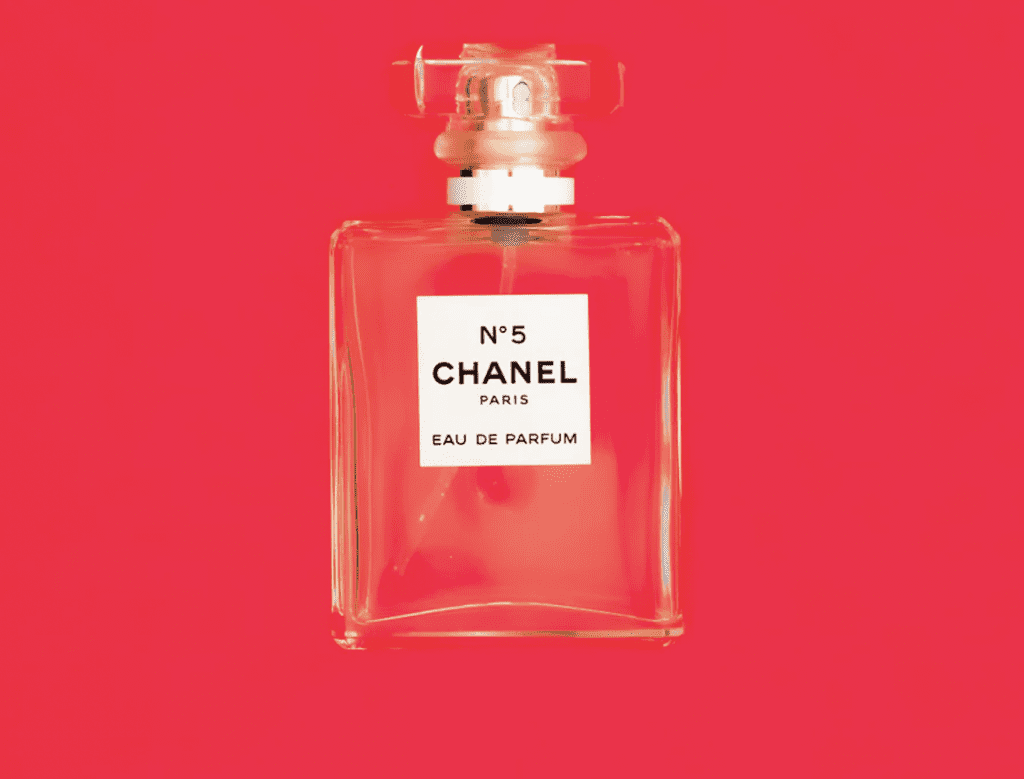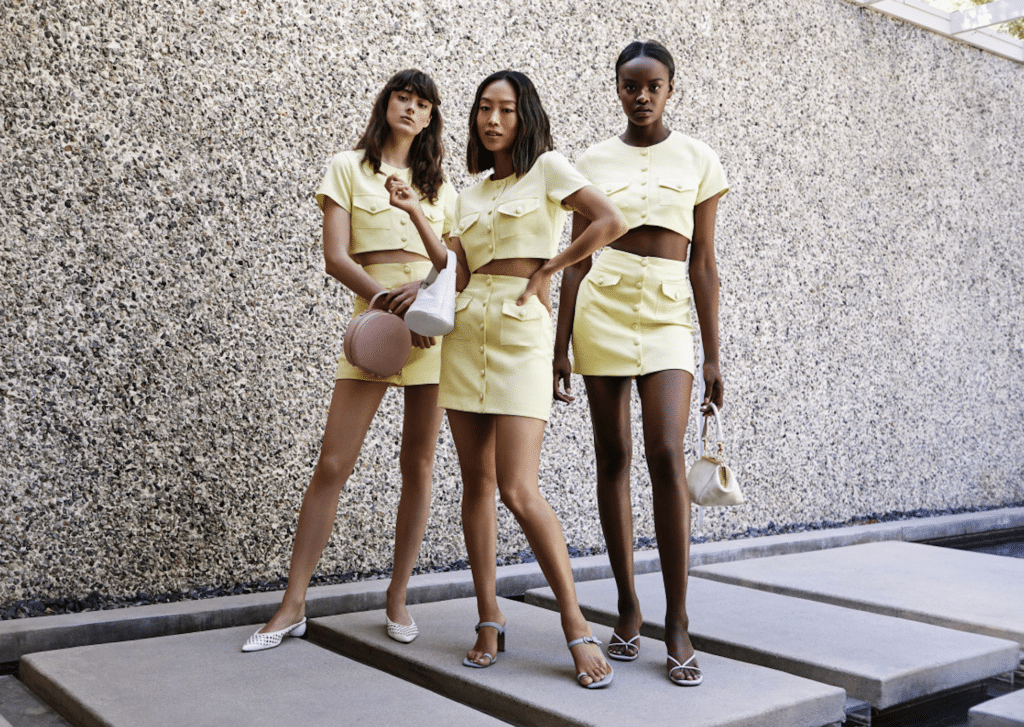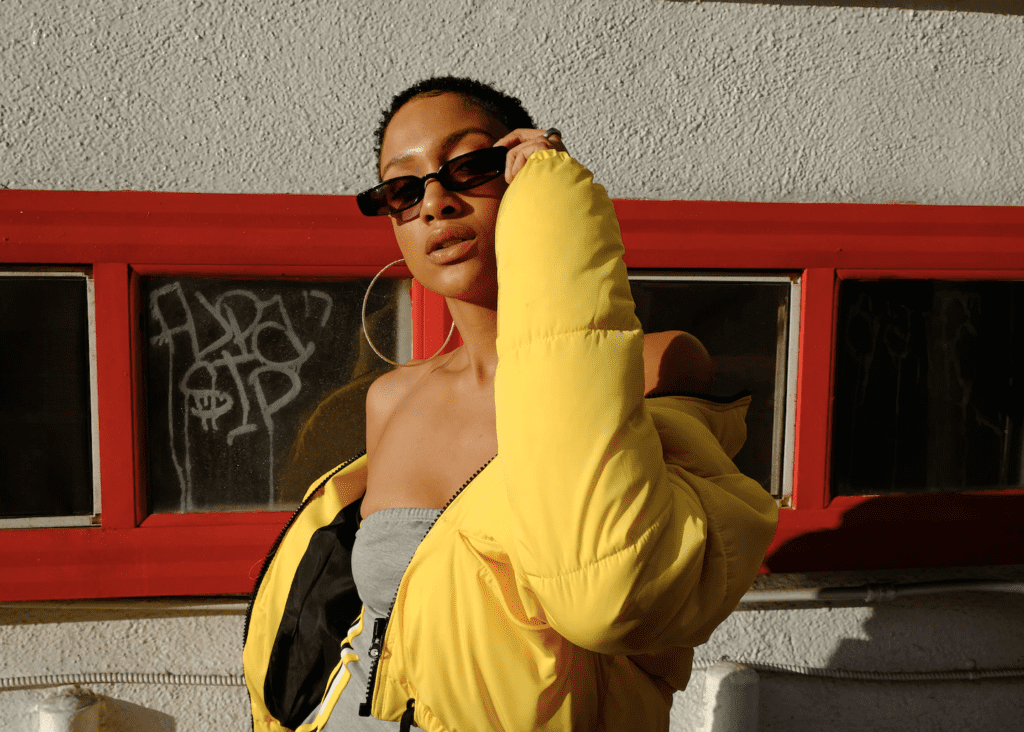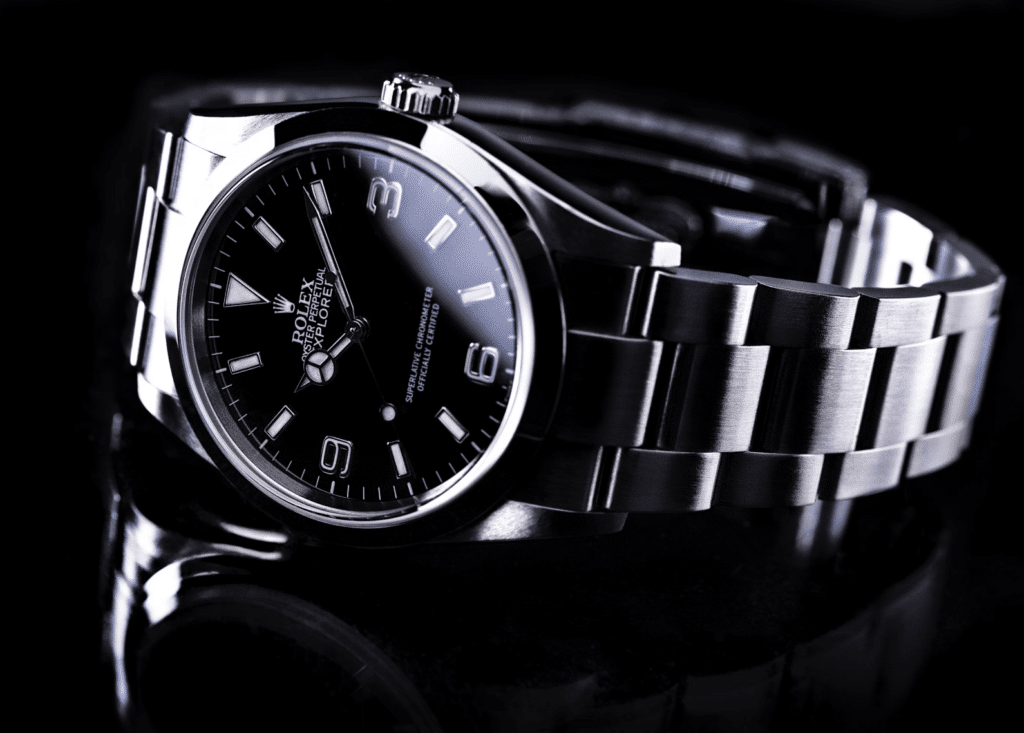Chanel is aiming to bolster its robust arsenal of world-famous trademark registrations by way of an interesting mark. According to a newly-filed trademark application for registration, Chanel is looking to register the number 5 with the U.S. Patent and Trademark Office (“USPTO”) for use on cosmetics, pointing to its use of the number embossed on shades of eyeshadow inside No. 5-branded palettes as an example of how it has been consistently using the mark since at least as early as November 2021. The application is not necessarily striking because the mark is a numeric one. Trademarks can take the form of a wide array of “symbols” that are capable of indicating the source of a product or service – from words and logos to colors and product packaging, and numbers certainly fall within this pool of possible indicators.
At the same time, the numeral mark at the center of Chanel’s newly-filed application is not particularly intriguing because it is a novel take by the 111-year-old French fashion brand. In fact, Chanel maintains trademark registrations in the U.S. for a number of … well, numbers. In 2015, for instance, it filed for and was issued a registration for 2.55 for use on handbags. The number is used by the brand to refer to a handbag style – “a singular rectangular shape created by Gabrielle Chanel in February 1955,” hence the 2.55 name. Around the same time, counsel for Chanel similarly filed an application (and eventually received a registration for) for 11.12 for use on handbags, namely, a handbag designed by late creative director Karl Lagerfeld that “reinterprets the iconic 2.55 handbag.”

Beyond that, Chanel maintains registrations for 1932 for use on perfumery, and for 3.55 for use in connection with “downloadable podcasts featuring commentary and ideas in the fields of fashion, art, music, travel, and creative inspirations.” And back in 2002, Chanel sought to register the number 5 for use on handbags and tote bags, but faced pushback from the USPTO and initiated an unsuccessful cancellation proceeding centering on an unaffiliated third party’s use (or lack of use, as Chanel argued in its petition for cancellation) of a stylized number 5 on different types of bags. (Chanel ultimately abandoned that application.) The brand has similarly sought to register 2005 for use on handbags by way of applications that date back more than 20 years.
The most interesting aspect of Chanel’s recently-filed application for registration for the number 5 for use on cosmetics – and its existing registration for the number for use on fragrances, bath gels, body cremes, etc., which it was issued back in 1989 – is the evolution of the trademark, itself. Specifically, it is worth noting how Chanel has been able to expand its rights in the name of its most famous fragrance over time to extend beyond the full “Chanel No. 5” moniker and the instantly recognizable shape of the bottle bearing the “Chanel No. 5” title (in which Chanel also enjoys trademark rights) to the shortened “No. 5” and since then, simply 5.
Along the way, Chanel – which first offered up the now-iconic fragrance in Coco Chanel’s boutique on the Rue Cambon in Paris on May 5, 1921 – has also expanded its use of (and thus, its rights in) the No. 5 mark in terms of the types of goods upon which it use used to corresponding offerings, such as deodorant and haircare products, jewelry, stickers/adhesive tape, and water bottles.
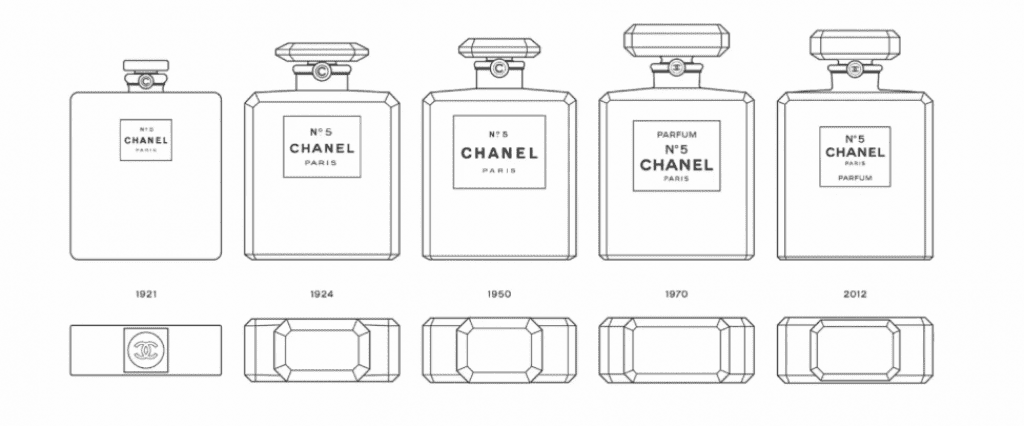
The progression from “Chanel No. 5” to the more simplified number 5 on its own is a practical reflection of Chanel’s varying real-world uses of the mark, as indicated by its application of the number 5 to eyeshadow palettes. Simultaneously, it is significant, as it gives the brand broader rights in the name of its famed fragrance, and thus, the ability to crack down on a bigger pool of infringing uses by others looking to piggyback on the appeal of the Chanel brand, as the brand has done in the past. (Note: Chanel’s actual use of the number 5 mark in certain classes of goods/services is what gives rise to its trademark rights in the U.S. and other first-to-file countries, and not its receipt of a registration for the mark.)
This pattern is also intriguing because Chanel is not the only brand seemingly looking to bolster its rights in some of its most famous indicators of source in this way. As TFL has previously reported, Prada has seemingly been angling to expand its rights in its triangle logo, showing pared down versions – including one that strips out the Prada name and the “Milano,” “DAL 1913,” etc. details entirely – in recent seasons, and filing trademark applications for such simplified triangle marks.
The most immediate read of that trend (in my eyes) is that Prada is looking to broaden its rights in the triangle trademark. Because the vast majority of its uses of the mark to date have included the Prada name and the “Milano,” “DAL 1913,” etc., its rights are almost certainly limited to a mark depicting those various details (or confusingly similar iterations thereof). By putting forth a pared back version of that triangle (which can probably be likened to some extent to how brands across the board adopted streamlined versions of their word marks not all that long ago), Prada is potentially setting itself up to enjoy more expansive rights in the little logo, and to (at least theoretically) enforce those rights against the use of similar triangle designs in instances when the “PRADA Milano,” “DAL 1913,” and the tiny coat of arms are missing from the equation.
And still yet, no stranger to smart trademark strategy, Louis Vuitton is known for singling out, and amassing trademark rights in and registrations for the individual elements that make up its marks, such as the single flowers and the “LV” logo that comprise its famed Toile monogram pattern, as well as for the monogram as a whole, in a move that enables the luxury goods titan to enjoy protection for the individual parts if the monogram is not replicated in total, and also to wage a greater number of total claims against an infringer if it is. In sum, it gives the brand more options when it comes to enforcement.
Chances are, Chanel’s legal team may have similar aims in mind.
And not to be overlooked, Chanel is known for rolling out trademarks that are both interesting from a trend perspective and also from a protection point of view. Its use of and registration for half of its double “C” in a circle logo comes to mind (Supreme’s adoption of “Sup” and its corresponding trademark registrations comes to mind on this front, as well), as does its vowel-less CHNL mark, which predates the VTMNTS launch. And while Chanel never filed a statement of use and thus, abandoned the application after a notice of allowance was filed, its @WELOVECOCO mark is another interesting and timely one from the brand.
As for another set of compelling Chanel applications for registrations that are currently pending before the USPTO: those are striking more based on the goods/services at issue, as opposed to the marks, themselves, as the applications for “Chanel & Moi,” Chanel’s famous word mark, its double “C” logo, “Ready to Care,” and “La Sirene” seem to indicate that Chanel is looking to get further into the “cleaning and repair of fashion and fashion accessories” space.







